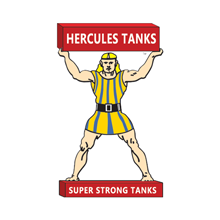PLEASE NOTE: The Bowentown bar markers have now been moved – Please see below for the updated co-ordinates.
Safe Water Mark
Latitude: 37 Degrees 27.292 minutes S
Longitude: 176 Degrees 01.295 minutes E
Outer Special Mark:
Latitude: 37 Degrees 27.900 minutes S
Longitude: 176 Degrees 00.925 minutes E
Inner Special Mark:
Latitude: 37 Degrees 27.936 minutes S
Longitude: 176 Degrees 00.225 minutes E
THERE ARE MORE FATAL BOATING ACCIDENTS ON HARBOUR & RIVER BARS THAN ANYWHERE ELSE !
TAKE EXTREME CARE IN DECIDING WHETHER OR NOT TO CROSS A BAR.
A bar is an underwater sand hill at the entrance to any river or harbour mouth, formed by silt carried down river and deposited just outside the entrance. This uneven shallow area causes waves to become steep and dramatically increase in height. This effect is made much worse with an outgoing current flowing against an on-shore wind, causing waves to break in an unpredictable pattern.
A bar with any breaking seas (white water) across the channel should not be crossed (either in or out) in an open boat.
Always ask a responsible and experienced person with local knowledge such as the local Harbour Master or Coastguard for details about the bar, such as where the channel is and how best to negoitiate the bar. The safest channel across a bar constantly changes depending on tide, weather conditions and movement of the silt that forms the bar.
VITAL ACTIONS FOR CROSSING BARS
Observe the bar for some time (at least 15 minute ). Do not attempt to cross the bar if your vessel cannot cope with the largest wave you have seen. If there is any white water across the channel do not attempt to cross the bar.
Get an up-to-date weather forecast. Do not go out over a bar if the weather is forecast to get worse. It may become unsafe to return!. Beware of a ‘Sea Breeze’ (an on-shore wind in the afternoon) that may pick up suddenly, making conditions on the bar dangerous.
Don’t gamble with your life, or the lives of others. If it looks dangerous to cross, wait for the conditions to change. Do your boating within the river, or if you are already out at sea, find a safe harbour or anchorage and wait for conditions to improve.


















Phone: 07 863 5017
Restaurant Hours:
Wednesday -Thursday from 5:00 pm
Open from 12pm for lunch on Friday, Saturday & Sunday
Office Phone: 07 863 5006
Bar Hours: Tuesday to Sunday from 4:00 pm
***Courtesy Van Available***